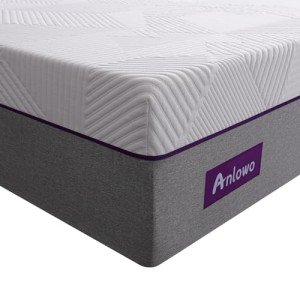The Reason Orthopedic Memory Foam Mattress Is Fastly Changing Into The Hottest Trend Of 2024
Motion Isolation Memory Foam Mattress: The Ultimate Guide
Recently, the need for high-quality sleep has risen, resulting in innovations in sleep innovation and convenience. Among these developments is the motion isolation memory foam mattress, a product that has actually changed the method people perceive comfort and sleep quality. This post explores the performance, benefits, and considerations of motion isolation memory foam mattresses, helping readers make notified options about their sleep environment.
What is Motion Isolation?
Motion isolation describes the ability of a mattress to absorb motion, thereby preventing it from moving throughout the surface area. This function is particularly useful for couples, where the movements of one partner can disrupt the other's sleep. Comprehending how Memory Foam Mattress With Warranty carry out in this area is vital for those looking for a peaceful night's sleep.
How Motion Isolation Works in Memory Foam Mattresses
Memory foam mattresses are designed to contour to the body, providing support and convenience. The distinct properties of memory foam are central to reliable motion isolation:
Viscoelastic Material: The viscoelastic material in memory foam reacts to pressure and heat. When weight is applied, the foam compresses and takes the shape of the body. This particular helps in minimizing the transfer of movement throughout the mattress.
Damping Effect: When one side of the mattress is disturbed (for instance, when one partner gets up or shifts positions), the foam's damping effect absorbs the shock, reducing the effect felt on the other side of the bed.
The result is a mattress that permits one person to move without significantly disrupting the other, making it a popular choice for couples or light sleepers.
Benefits of Motion Isolation Memory Foam Mattresses
1. Peaceful Sleep Environment
Among the most significant benefits of a motion isolation memory foam mattress is its ability to develop a tranquil sleep environment. Couples who wake each other up from motions can benefit greatly from this function.
2. Pressure Relief
Memory foam is renowned for its pressure-relieving capabilities. It complies with the body, assisting relieve pressure points on the shoulders, hips, and back, which can result in better sleep quality.
3. Spine Alignment
The capability of memory foam to contour to the body's natural curves promotes healthy spinal column alignment. Proper alignment minimizes the threat of pain and long-term back concerns.
4. Resilience
High-quality memory foam mattresses are created to last gradually, providing both convenience and support. Many makers provide extended warranties, suggesting their confidence in the product's resilience.
5. Hypoallergenic Properties
Memory foam is resistant to dust mites and irritants, making it an outstanding choice for individuals with allergic reactions or breathing problems. This function contributes to a healthier sleeping environment.
Downsides of Motion Isolation Memory Foam Mattresses
1. Heat Retention
Some memory foam mattresses might maintain heat, triggering pain for those who tend to sleep hot. Many newer designs include cooling technologies, but it remains a factor to consider when selecting a mattress.
2. Weight
Memory foam mattresses can be much heavier than other mattress types, making them challenging to move or change without assistance.
3. Expenditure
High-quality memory foam mattresses can be more costly than standard spring mattresses. However, the investment might be beneficial when thinking about durability and sleep quality.
Selecting the Right Motion Isolation Memory Foam Mattress
When choosing a motion isolation memory foam mattress, a number of factors need to be considered:
1. Density and Firmness
- Density: Higher density foam may provide better motion isolation and durability. However, it might also feel firmer.
- Firmness Level: Consider personal comfort choices. A medium to medium-soft firmness is frequently suggested for couples.
2. Cooling Features
If heat retention is an issue, look for mattresses with cooling gel layers, breathable covers, or open-cell foam styles.
3. Trial Period and Warranty
Lots of trusted makers use trial durations and service warranties. A trial period permits prospective purchasers to evaluate the mattress at home, while a warranty provides peace of mind concerning resilience and craftsmanship.
4. Evaluations and Recommendations
Reading client evaluations and seeking suggestions can provide insight into the mattress's efficiency, especially concerning motion isolation and general convenience.
Often Asked Questions (FAQs)
1. Do all memory foam mattresses have motion isolation properties?
While most memory foam mattresses offer some level of motion isolation, the degree differs amongst different models. Higher-density foams generally provide much better efficiency.
2. How do I know if a memory foam mattress is ideal for me?
Consider your sleeping position, any existing discomfort (like pain in the back), and your personal convenience preferences. Checking mattresses in-store or utilizing trial durations can help you find the right fit.
3. Can I use a memory foam mattress on any bed frame?
Many memory foam mattresses can be utilized on different bed frames, consisting of platform beds, slatted frames, and adjustable bases. Ensure the frame supplies adequate assistance to keep the stability of the mattress.
4. How typically should I replace my memory foam mattress?
Memory foam mattresses normally last in between 7 to 10 years. Check for signs of wear and tear, such as drooping or swellings, to figure out when it's time for a replacement.
A motion isolation memory foam mattress is an exceptional financial investment for those looking for a relaxing and undisturbed night's sleep. With its capability to lessen motion transfer, supply pressure relief, and promote appropriate spinal column alignment, it addresses different sleep-related issues. By considering the key elements described in this guide, possible buyers can make informed decisions and delight in the complete benefits of this innovative sleep innovation.
Benefits
Downsides
Peaceful sleep environment
Heat retention
Pressure relief
Much heavier than other types
Promotes spine alignment
Higher initial expense
Sturdiness
Varies with quality
Hypoallergenic homes
As sleep continues to play an important function in general health and well-being, financial investments in quality mattresses like motion isolation memory foam options are more appropriate than ever.
